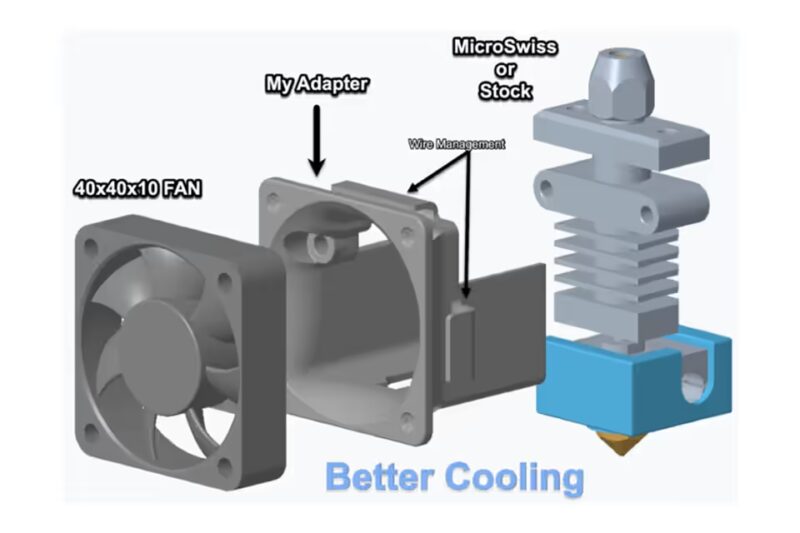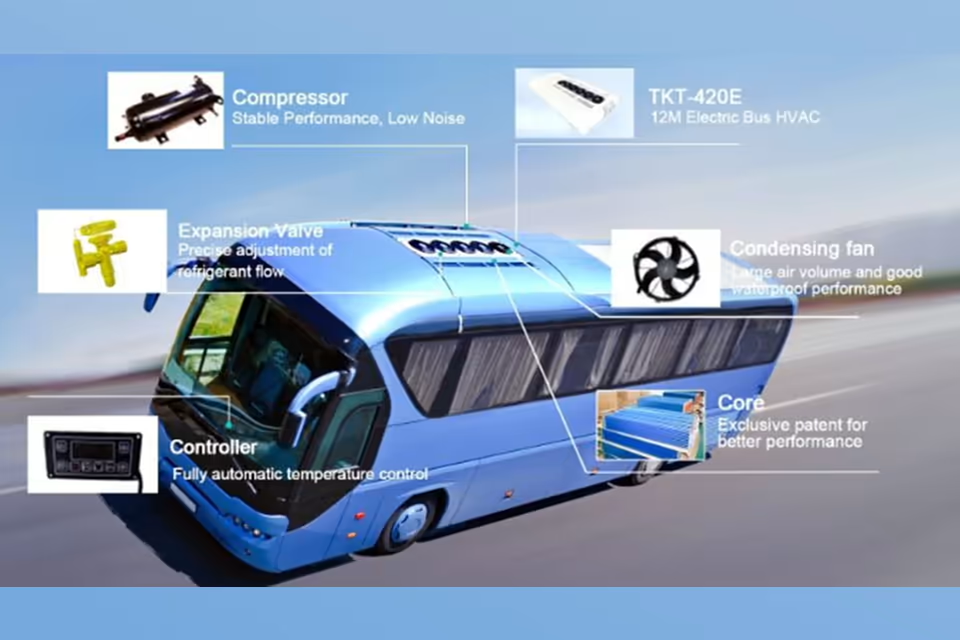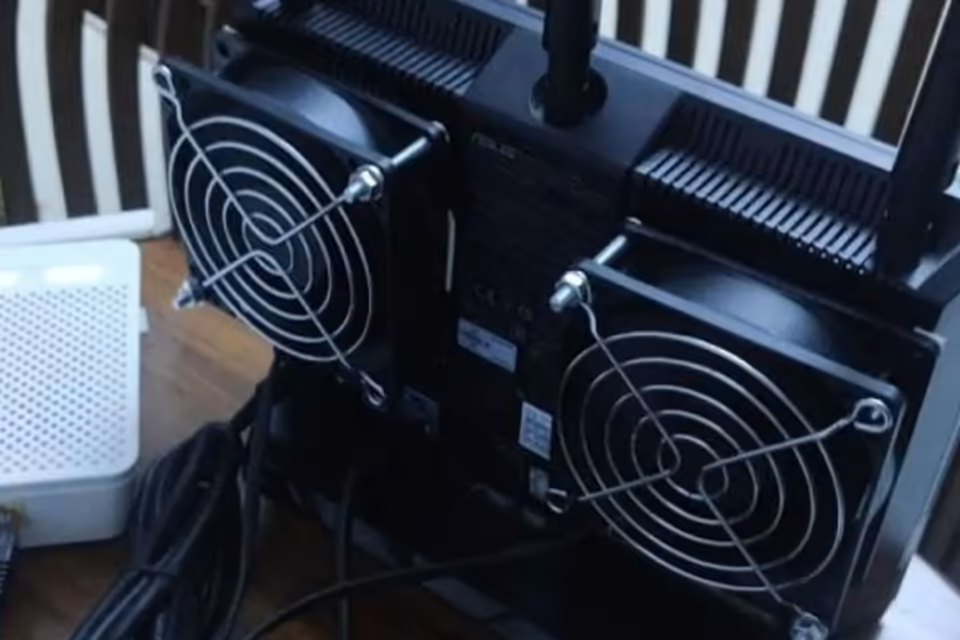Lüfter sind entscheidende Komponenten in 3D-Druckern, die für die Temperaturregelung des extrudierten Filaments und der elektronischen Komponenten des Druckers verantwortlich sind. Ihre Hauptfunktion besteht darin, den geschmolzenen Kunststoff beim Auftragen zu kühlen, um sicherzustellen, dass er schnell und korrekt aushärtet, bevor die nächste Schicht aufgetragen wird.
Dieser kontrollierte Kühlprozess ist entscheidend für die Erzielung hochwertiger Drucke, da er sich direkt auf die Schichthaftung, Maßhaltigkeit, Oberflächengüte und die gesamte strukturelle Integrität auswirkt. Eine unsachgemäße Kühlung ist eine häufige Ursache für Druckfehler, die zu Defekten wie Verzug, Absacken und Stringing führen.
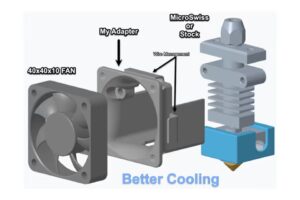
Types of Cooling Fans
3D-Drucker verwenden verschiedene Arten von Lüftern, die jeweils für einen bestimmten Zweck konzipiert sind:
Axial Fans
Die gängigsten Lüftertypen drücken Luft parallel zu ihrer Rotationsachse. Sie werden hauptsächlich zur Kühlung des Hotends des Druckers (um zu verhindern, dass Wärme den Filamentpfad hinaufwandert) und zur Belüftung des Mainboards und anderer Elektronik verwendet.
Radiallüfter (Gebläselüfter)
Diese Lüfter saugen Luft von der Mitte an und stoßen sie mit hohem Druck aus einem seitlichen Auslass aus. Dieses Design erzeugt einen konzentrierten, starken Luftstrom, wodurch sie ideal für die Bauteilkühlung sind – das direkte Kühlen des Filaments, während es auf den Druck extrudiert wird.
Querstromlüfter
Diese Lüfter werden hauptsächlich in geschlossenen 3D-Druckern eingesetzt und erzeugen einen breiten, gleichmäßigen Luftstrom durch die Druckkammer, wodurch eine konstante Umgebungstemperatur aufrechterhalten wird.
Chipkühler und Gehäuselüfter
These are smaller, specialized fans designed to cool specific electronic components like stepper motor drivers or power modules, preventing them from overheating.
Funktionalität und Einfluss auf die Druckqualität
The effectiveness of a cooling fan has a direct and significant impact on the final print’s quality, both mechanically and aesthetically.
Temperaturregelung und mechanische Leistung
The core function of the part cooling fan is to manage the filament’s temperature after extrusion.
Preventing Sagging and Drooping
Without adequate cooling, molten filament on overhangs and bridges will droop under gravity before it has time to harden. A strong cooling fan solidifies these features in place, enabling the printing of complex geometries.
Preventing Warping and Curling
Conversely, if a filament is cooled too quickly or unevenly, it can shrink rapidly, causing the corners of the print to lift off the bed (warping) or the upper layers to curl.
This is especially problematic for materials with high thermal contraction, like ABS. Proper cooling management ensures a gradual temperature change, which improves layer adhesion and maintains the print’s dimensional accuracy.
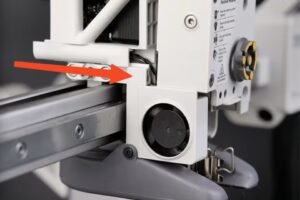
Ästhetische Eigenschaften und Oberflächengüte
Cooling also determines the final look and feel of a print. The rate of cooling affects the crystalline structure of the plastic, which influences its appearance.
Higher printing temperatures with less cooling tend to produce a smoother, glossier finish, while lower temperatures with aggressive cooling often result in a more matte appearance.
Effective cooling is also key to preventing surface blemishes, blobs, and stringing (fine strands of plastic between separate parts of the print), which occur when the nozzle is too hot and the filament isn’t cooled quickly enough.
Häufige Probleme und Lösungen
Understanding common cooling-related problems is key to successful 3D printing.
Sagging in Overhangs and Bridges
This is caused by insufficient cooling. The solution is to increase the part cooling fan speed to solidify the filament faster.
Curling or Corner Lifting (Warping)
This results from excessive or uneven cooling, causing the print to shrink and pull away from the bed. To fix this, reduce the cooling fan speed for the initial layers, use a heated print bed to keep the base warm, and, for sensitive materials, use an enclosure to maintain a stable ambient temperature.
Loss of Detail and Stringing
These issues are often caused by excess heat, causing the filament to ooze from the nozzle. The solution is to increase cooling, lower the printing temperature, and ensure retraction settings are properly calibrated.
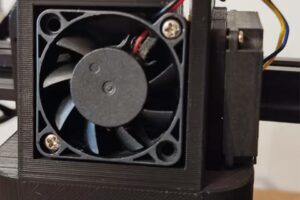
Materialspezifische Kühlstrategien
Different filaments have unique thermal properties and therefore require different cooling strategies.
Polylactic Acid (PLA)
Benefits greatly from aggressive cooling. It is common practice to run the part cooling fan at 100% speed after the first few layers. This allows for sharp details, clean overhangs, and excellent bridging.
Acrylonitrile Butadiene Styrene (ABS)
Requires a much more nuanced approach. ABS is prone to cracking and warping if cooled too quickly. It should be printed with the cooling fan turned off or at a very low speed (30-50%). Using a heated enclosure is highly recommended to keep the ambient temperature stable and prevent drafts.
Polyethylene Terephthalate Glycol (PTG)
Sits between PLA and ABS. It benefits from some cooling to reduce stringing and improve detail, but too much cooling can cause poor layer adhesion. Fan speeds typically range from 20% to 100%, depending on the specific geometry of the print.
Thermoplastic Polyurethane (TPU)
As a flexible filament, TPU is less dependent on cooling than rigid materials. However, some cooling can help manage its viscosity and reduce blobs or strings, especially on detailed prints.
Wartung und Upgrades
To ensure optimal performance, cooling fans require regular maintenance. Dust and debris can build up on the blades, reducing airflow and efficiency. Regularly cleaning the fans will maintain consistent cooling.
For users looking to improve performance, upgrading to higher-quality, more powerful fans can provide significant benefits, leading to better print quality, especially on complex models. Furthermore, when printing with materials that emit fumes, proper ventilation is essential for both print quality and user safety.

